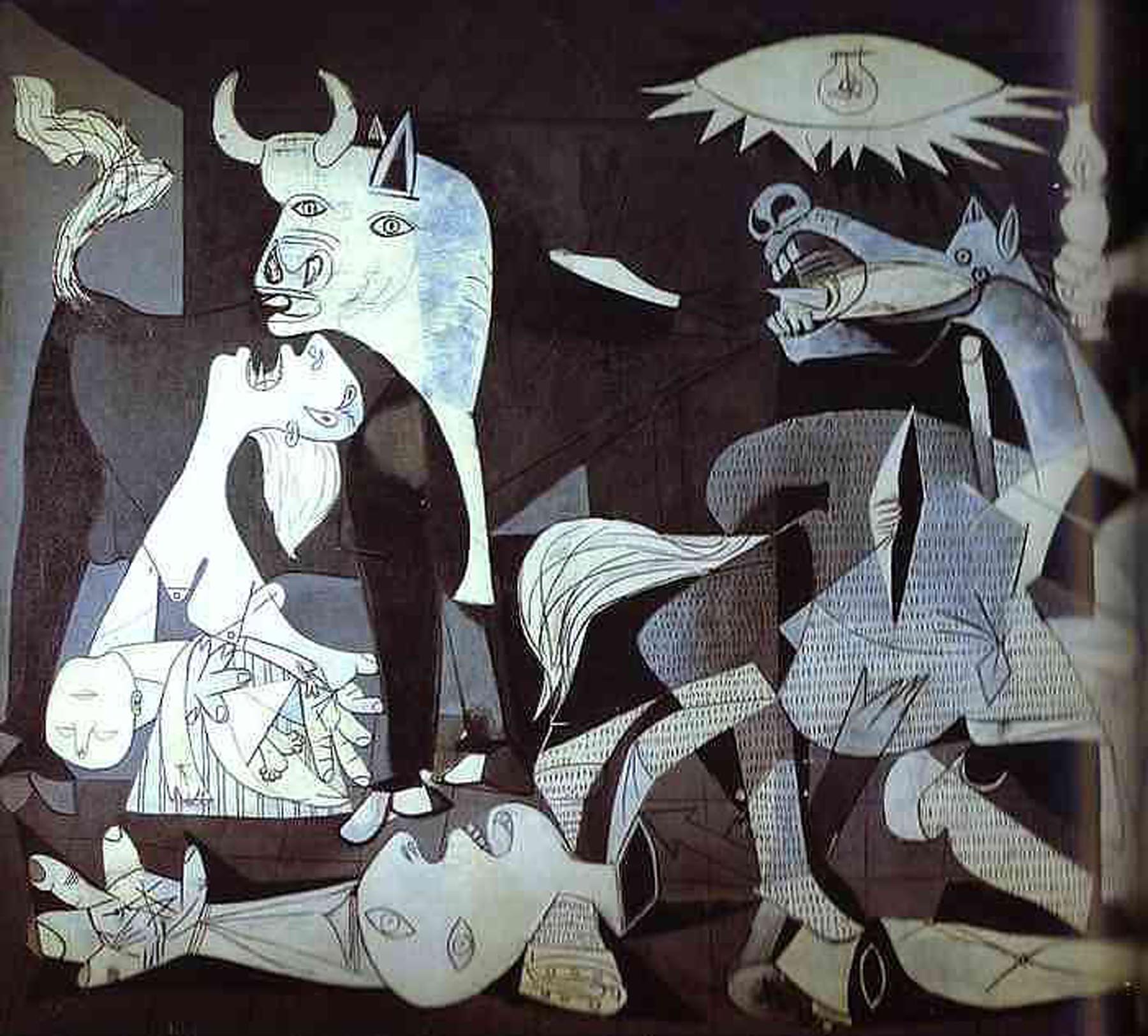A political objective of the artistic establishment in the U.S. is to depoliticize art. Art that explicitly expresses a political commitment to change the power relations in our societies is frowned upon, discouraged, ridiculed or condescendingly dismissed by the art critic whose assumed maturity is reflected in his cynicism and skepticism of anything that transcends his own parochialism.
It has to be expected that when an art collection of Picasso’s politically committed paintings has been organized (“Picasso: Peace and Freedom” -- Albertina, Vienna, Sept. 22, 2010 – January 16, 2011, and Louisiana Museum of Modern Art, Denmark, February 11-May 29, 2011), a voice of that establishment would warn that “political art” was actually non-political.
And this is what John Richardson tries to do in his article in The New York Review of Books (November 25, 2010) entitled “How Political Was Picasso?” concluding that the painter was not really political. He bases his conclusion on a whole series of erroneous observations and claims about Picasso and his political views during his youth. Richardson displays limited knowledge of the Spanish Civil War.
Richardson tries to diminish Picasso’s commitments to the causes he supported, including the anti-fascist struggles in Spain and Europe. To that end, he rewrites history and indulges in psychoanalytical explanations, ignoring the political realities and context that, to a large degree, shaped Picasso’s life and art.
For example, Richardson presents Picasso as a very changeable character, his opinions depending on the lover he had at the time. This is an accusation usually aimed at women – a woman’s opinion simply reflecting her husband’s opinion. It might seem to be an improvement to put a man in the same position, and changing wife for lover. But in either case, for man or woman, this stereotyping is wrong, and especially so in the case of Picasso.
Picasso grew up artistically in Barcelona, when he arrived from Malaga at the early age of 13 years and stayed until he was 22 years of age, when he went to Paris. The artistic circles in which he moved were clearly progressive.
In Barcelona (where I was born), in Picasso’s youth, for example, the artistic community in which he moved was influenced by a political and social context in which anarchism and socialism were extremely important.
To define Picasso as a monarchist at that point, as Richardson does, is frankly ridiculous. Later, in 1944, he became a member of the Communist Party and remained so to the last day of his life in 1973.
He despised Dali, who changed completely and became a strong supporter of the fascist regime – to the point of sending congratulatory telegrams to the dictator every time he signed a death warrant for members of the underground who had been detained by the Spanish Gestapo (La Brigada Politico Social).
This is why Dali left Spain when the dictatorship ended, afraid that people might lynch him. The contrast between Dali and Picasso could not be stronger. Picasso helped and supported the antifascist underground in Spain, of which I was a member.
He was clearly committed to the antifascist struggle and to the establishment of democracy in Spain. His integrity and steadfastness in this area completely contradicts the ridiculous, flimsy accusation that his political commitments changed according to his lovers’ whims.
Richardson’s limited knowledge of Picasso’s commitments is accompanied by an ignorance of the Spanish situation during the fascist dictatorship. For example, he mistakenly describes the famous Spanish bullfighter, Dominguin as close to the dictator’s circles, indicating that Dominguin approached Picasso in response to the Franco regime’s wish to co-opt Picasso.
Dominguin was, in fact, very close to the antifascist Spanish underground and collaborated extensively with the resistance. He hated Franco and the dictatorship. Another of Richardson’s completely inaccurate claims is that Mussolini’s planes bombed Palma de Majorca. Palma de Majorca, however, was on the fascist side and was not bombed by Mussolini, who supported the military fascist coup.
Actually, the Italian fascist planes had their base in Majorca (where even today there’s a monument to this), from which they bombed Barcelona and many other cities in eastern Spain.
Richardson’s Cold War mentality seems to see Picasso’s antifascist commitment as wavering, with that wavering being a sign of the realization that the cause he had supported was not worth his commitment.
Although Richardson’s intention seems to be to “protect” Picasso and clean his past (attributed to having the wrong lover at the right time), this is profoundly offensive not only to Picasso but to the millions who shared that commitment, without which the world would be in worse shape.
Vicente Navarro is professor of Public and Social Policy, Johns Hopkins University and professor of Political Science at Pompeu Fabra University. He can be reached at: vnavarro@jhsph.edu
From CounterPunch January 20, 2011







No comments:
Post a Comment